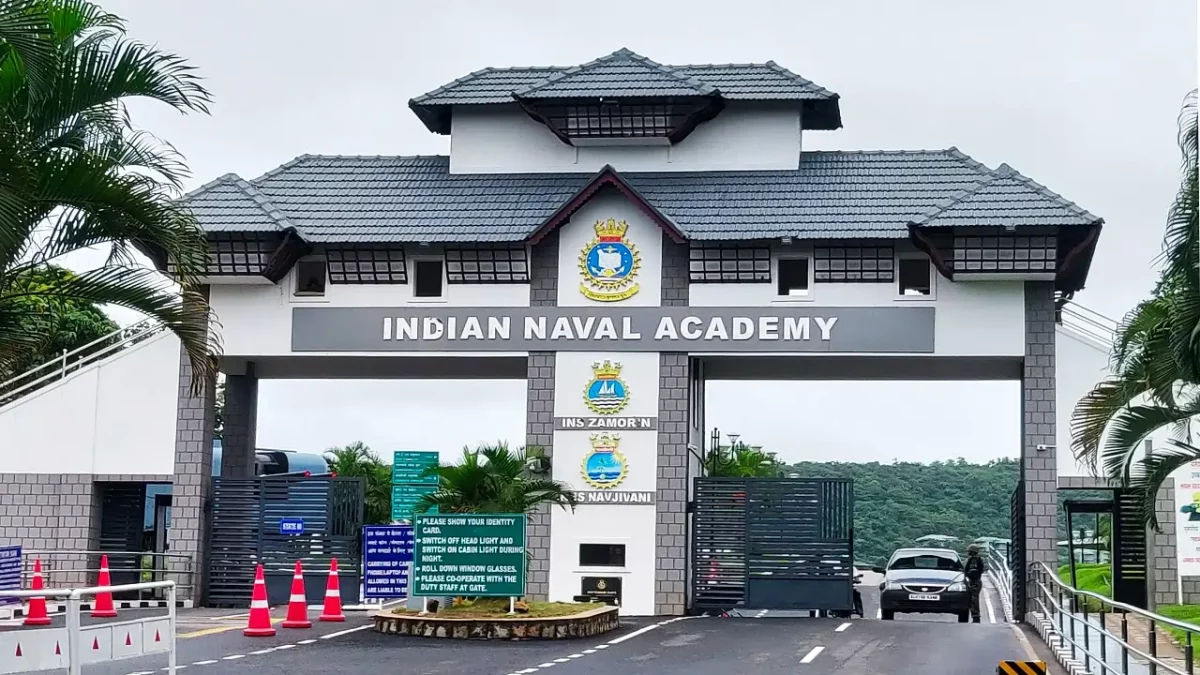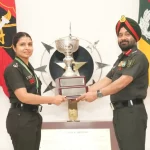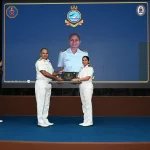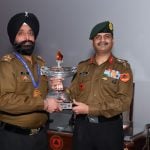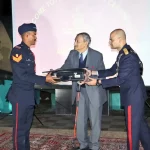The Indian Naval Academy (INA), often hailed as the cradle of naval leadership in India, stands as a beacon of excellence in defense training. Located in the picturesque landscape of Ezhimala in Kannur district, Kerala, this institution not only molds young aspirants into competent naval officers but also embodies the spirit of discipline, innovation, and national service. This detailed exploration delves into every facet of the INA, from its storied past to its cutting-edge present, providing an in-depth look at what makes it one of the world’s premier naval training establishments.
Historical Evolution and Establishment
The origins of the INA trace back to the pre-independence era when officers of the Royal Indian Navy were trained at the Royal Naval College in Dartmouth, UK. After India’s independence in 1947, training shifted domestically, initially through the Joint Services Wing (JSW) and later the National Defence Academy (NDA) established in 1954. However, as the Indian Navy expanded rapidly in the 1960s, the need for a dedicated naval training facility became evident. The INA was formally established in May 1969 in Kochi, consolidating various training elements under one roof.
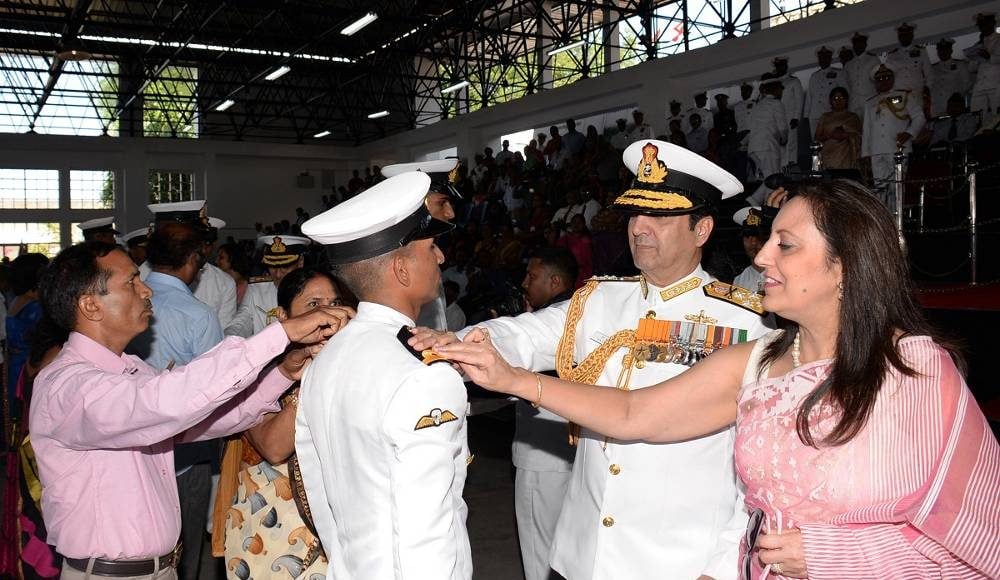
By 1986, it relocated to INS Mandovi in Goa to address growing requirements, but space limitations soon necessitated a larger campus. In 1979, the Government of India approved the development of a new site, and Ezhimala was selected in 1982 due to its strategic location and natural features. The Kerala government played a pivotal role, providing land and infrastructure support, including dredging the Kavvayi backwaters and enhancing connectivity via railways and roads. The foundation stone was laid by Prime Minister Rajiv Gandhi on January 17, 1987, though economic constraints delayed construction until the late 1990s.
The academy was inaugurated on January 8, 2009, by Prime Minister Manmohan Singh, marking a significant milestone. The project cost rose from an initial estimate of ₹166 crore to ₹721 crore (equivalent to about ₹18 billion or US$210 million in 2023 terms). Vice Admiral MP Muralidharan served as the first Commandant, with the campus designed to accommodate expanding training needs. Today, the INA is Asia’s largest naval academy and the third-largest globally, reflecting India’s commitment to self-reliant defense capabilities.
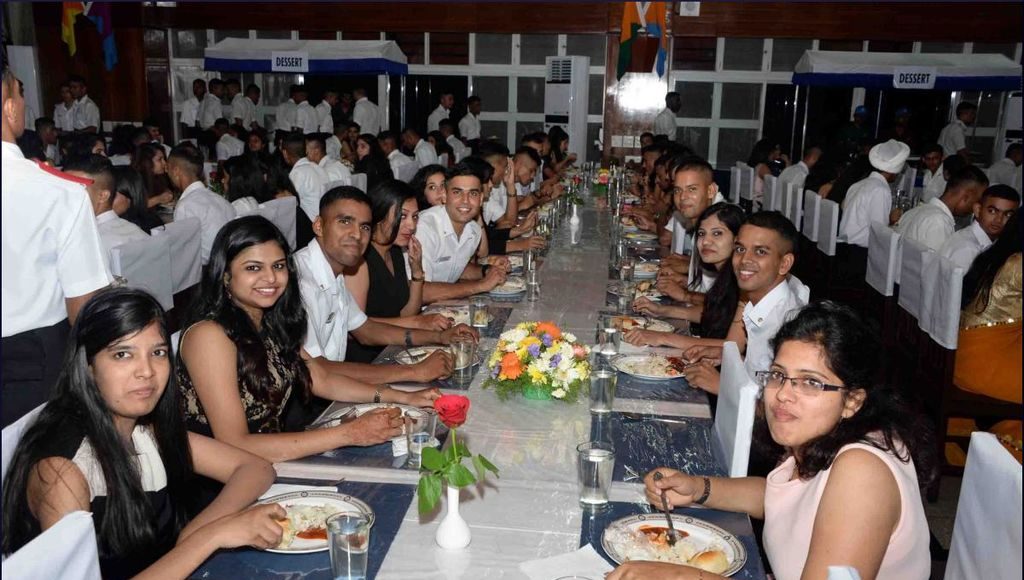
Strategic Location and Infrastructure
Positioned between the majestic Ezhimala hill and the Kavvayi backwaters, the INA’s 2,452-acre campus offers a unique blend of natural beauty and functional design. It is situated 35 km north of Kannur town, 117 km south of Mangalore, with convenient access via Payyanur railway station (8 km away) and Kannur International Airport (60 km southeast). The 7-kilometer beachfront on the Laccadive Sea provides an ideal setting for maritime training, while the rural surroundings foster a focused environment.
The campus is meticulously divided into three zones:
- Training Zone: This core area features the main academic building perched on the highest point, housing Service and Technical Training wings. It includes laboratories, workshops, a well-stocked library, and an auditorium seating 1,800. Outdoor facilities encompass a firing range, sports fields, aquatics complexes, and cadet messes. The zone supports up to 1,200 undergraduates annually, including final-year NDA cadets and Indian Coast Guard trainees.
- Administration Zone: Comprising the Administrative Complex, it includes the INHS Navjivani—a 64-bed naval hospital commissioned on December 12, 2012—along with logistics support, motor transport, and a fire station. This zone ensures comprehensive healthcare for cadets, staff, veterans, and their families.
- Accommodation Zone: Designed for staff and families, it houses approximately 4,000 personnel, supported by 161 officers, 47 professors/lecturers, 502 sailors, and 557 defense civilians (as of 2010 data). The infrastructure emphasizes sustainability and modern amenities.
Notable landmarks include the Mt. Dilly Lighthouse and the Nalanda Complex, which exemplify architectural innovation with solar panels and eco-friendly designs.
Mission, Objectives, and Training Philosophy
The INA’s mission is to prepare young men and women as professional naval officers by imparting sound education, rigorous physical training, and instilling values of duty, honor, and courage. It aligns with the broader goals of the Indian Navy, emphasizing self-reliance (Aatmanirbhar Bharat) and readiness for contemporary threats. The training philosophy integrates academic excellence with practical skills, fostering leadership through a balanced curriculum that includes naval orientation, seamanship, and character building.
Cadets engage in activities like navigation runs, watermanship, live firing, and team-building exercises, culminating in events such as campfires that celebrate grit and camaraderie. The academy’s motto underscores transformation: turning aspirants into leaders who embody discipline and innovation.
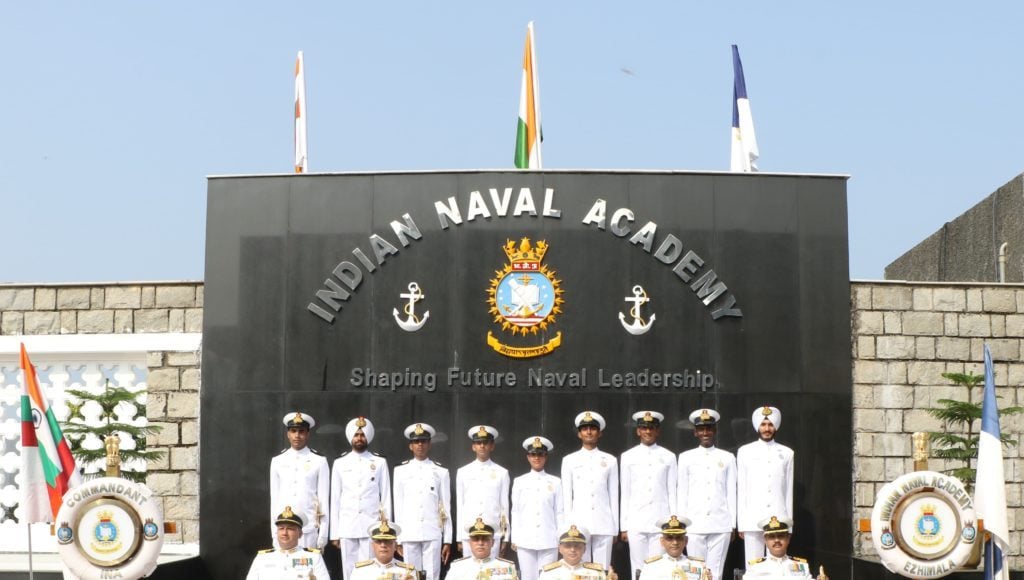
Courses and Programs Offered
The INA provides a variety of structured programs tailored to different entry schemes, all affiliated with Jawaharlal Nehru University (JNU) and approved by the All India Council for Technical Education (AICTE). Here’s a breakdown:
| Course Name | Duration | Degree Awarded | Key Focus Areas | Eligibility/Notes |
|---|---|---|---|---|
| 10+2 Indian Naval Academy Course (INAC) | 4 years | BSc from JNU | Naval orientation, academics, physical training | Post-10+2; includes final year for NDA cadets; leads to commissioning as Sub-Lieutenants. |
| 10+2 Navy Tech Entry | 4 years | BTech in Electronics & Communication, Mechanical, or Naval Architecture | Engineering specialization; additional 6 months for Naval Architecture at Visakhapatnam | Option for MTech at IIT Delhi; focuses on technical branches. |
| Graduate Officer-Trainee Program | Varies (typically 1-4 years) | BTech or equivalent | Surface warfare, specialized roles | For graduates via UPSC; further training in warfare areas. |
| Coast Guard Assistant Commandants Training | Varies | Integrated with Navy programs | Basic naval and coast guard skills | Joint training with Navy cadets for operational synergy. |
These programs ensure cadets are versatile, with opportunities for postgraduate studies and specializations.
Admission Process
Entry to the INA is merit-based and highly selective. Candidates must clear the Union Public Service Commission (UPSC) National Defence Academy/Naval Academy (NDA/NA) or CDS examination, held twice yearly. Successful candidates proceed to the Services Selection Board (SSB) interview, a five-day rigorous assessment covering:
- Day 1: Screening tests including intelligence and picture perception.
- Days 2-4: Psychological tests, group tasks, and interviews evaluating aptitude, teamwork, and leadership.
- Day 5: Conference and medical examination.
For Short Service Commission (SSC) entries, selection is based on merit lists, with provisions for permanent commission based on performance. Women candidates are increasingly integrated, reflecting evolving policies. The process prioritizes physical fitness, with requirements like swimming proficiency and medical standards.
Facilities and Cadet Life
Life at the INA is a blend of rigor and reward, structured around six squadrons: Achiever, Braveheart, Cheetah, Daredevil, Eagle, and Fighter (with plans to expand to 16). Each squadron, divided into four divisions of about 60 cadets, is led by officers and senior cadets in roles like Divisional Cadet Captains (DCC) and Squadron Cadet Captains (SCC). The overall structure includes Flotilla Cadet Captains (FCC) and the Academy Cadet Captain (ACC), ensuring a hierarchical yet supportive system.
Cadets live in individual rooms, following a demanding schedule that includes early morning physical training, academic classes, and extracurriculars like equestrianism, cross-country running, and sports. Facilities are world-class:
- Academic: Advanced labs, simulators, and a digital library.
- Sports and Adventure: Olympic-standard pools, gyms, firing ranges, and adventure camps.
- Healthcare: INHS Navjivani for comprehensive medical support.
- Recreational: Auditoriums, messes, and scenic areas for relaxation.
Traditions from INS Mandovi, such as squadron heritage, build esprit de corps, while events like Camp Barracuda and Samudramanthan test endurance and teamwork.
While specific alumni details are not exhaustively listed in primary sources, INA graduates have risen to prominent roles in the Indian Navy, including flag officers and commanders. The academy’s impact is evident in the Navy’s operational successes. A landmark achievement was receiving the President’s Colour on November 20, 2019 the highest honor for a military unit—recognizing its contributions to training excellence.
Unique aspects include its vast size, direct sea access for hands-on training, and integration of technology with nature-inspired designs. The academy’s affiliation with top institutions like JNU and IITs ensures academic rigor, while joint training with the Coast Guard enhances inter-service cooperation.
In summary, the Indian Naval Academy exemplifies India’s defense prowess, continuously adapting to prepare leaders for tomorrow’s challenges.
Also Read

